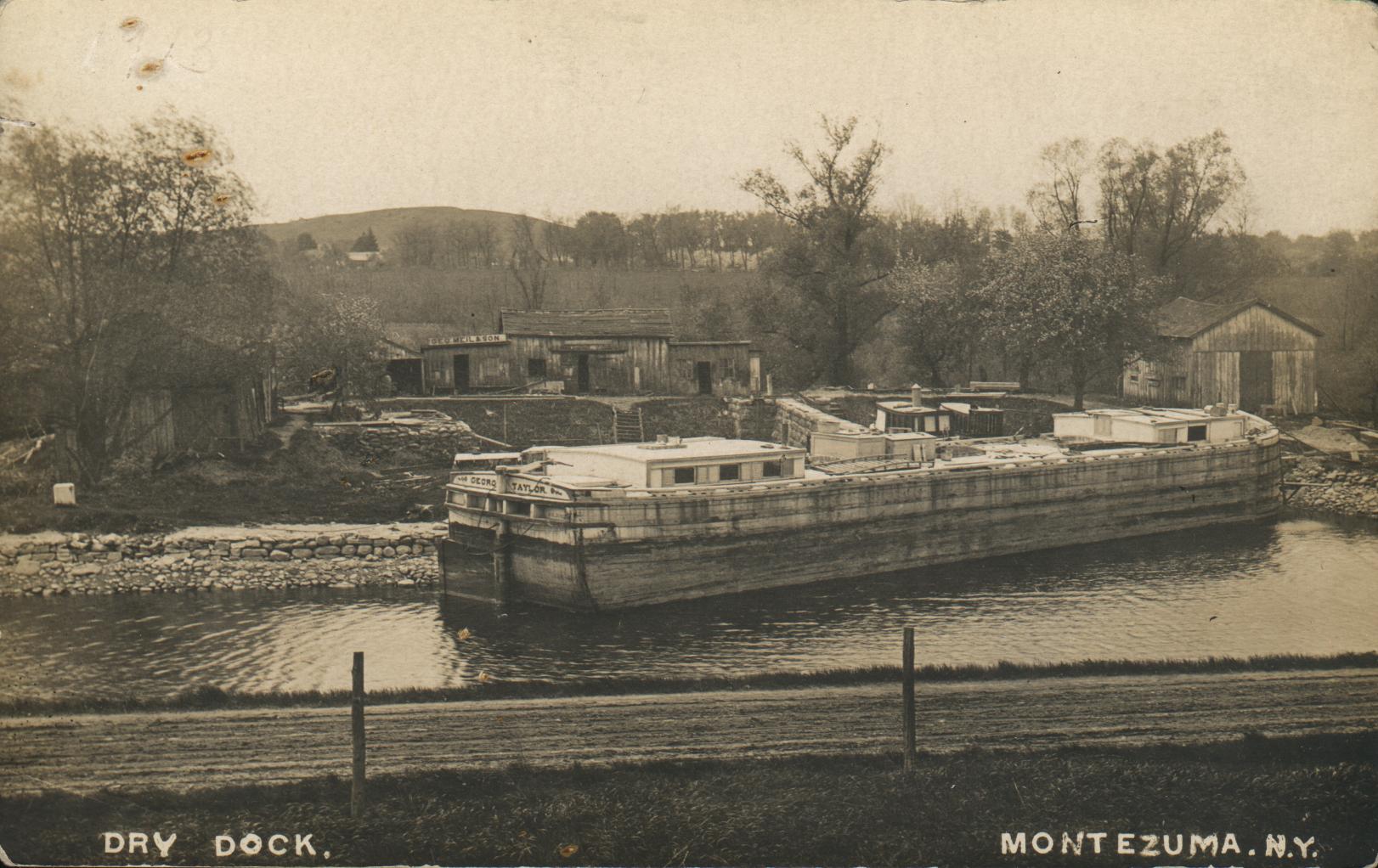In the year 1900 the Erie Canal was eighty-years-old, and it was showing it’s age. The state of New York was investigating whether to construct a new Barge Canal, fix up the old and worn canal, or get out of the canal business altogether. In November 1903, the voters would get the chance to decide what they wished to do with the state’s canals, and ultimately, they would decide to build the new and larger Barge Canal.
In looking through the 1900 and 1910 censuses I can find a number of local people who were still making their living on the canal. In 1900 there were ten boatmen and six boat builders, and then years later in 1910 there eleven boatmen and eight working at the drydock. The May 1912 newspaper noted that Mr. and Mrs. George Alfreds, Mr. and Mrs. William Alfreds, Mr. and Mrs. Peter Wilson, Rozelle Ray, and George Ray all left the village to start work on their canal boats. George and Rozelle Ray were a father and son, so we can see from this that canal life was a still a family affair. The Alfreds certainly deserve a bit more research, but for now I will focus on the Ray family.
George Hill Ray first came to Port Byron around 1870. Why he moved from the lower Hudson Valley to central New York was never stated but perhaps it was to marry Althea Ransier, the daughter of George and Catherine. In the1880 census he was listed as a Day Laborer, however by 1900 he was listed as being a canal boat owner. He continued on as a boat captain until the end of the towpath canal era in 1917. At that time he was 74 and it was time to retire.
George was a very pious man who refused to operate his boats on Sunday. The Syracuse papers gave him the title of the “Canal Evangelist” and said that he was known in all the missions and Salvation Army offices between Buffalo and Albany. In 1935 his son Oliver related a story about how the family ran out of money and supplies on a Saturday evening, however the father refused to move on Sunday, even though sitting still added a day until they could reach their destination and get their pay. When they woke Sunday morning and went about caring for the mules, they found a bale of hay floating alongside the boat, and this provided feed for the mules. In January 1915, George preached at the Free Methodist church that Port Byron was getting as “bad as Broadway for wickedness.” George invited the good folks of Auburn, Fulton, Syracuse, and Weedsport to attend a series of revival meetings in Port Byron to help clean out the evils that besot some of his neighbors and the village. For their column about Mr. Ray’s invitation, the Auburn Citizen simply gave the headline that, “Port Byron Is Bad.” Being deep in the winter, I don’t know how many people would have made the trip help clean out the wickedness, but I will leave it to the readers to decided if George was successful.
Three of George and Althea’s four boys would work on the canal and end up as captains or owners. John Ray married Susan Cushman. A couple years ago I wrote about the death of Susan’s bother Oliver while he was steering John’s boat. After the old towpath canal was abandoned, John later went onto work for the Great Lakes Dredge and Dock Company. Their son G. Richard Ray also found work with this company. He later worked with the NYS Division of Canals for twenty-three years where he served as a derrick operator on the Wards Island. Richard would be the third and last Ray generation to work on the canals. Sadly, the Wards Island was taken out of service and sunk as part of a man-made reef project a couple years ago.
Evrand Ray owned a number of boats and the tug, the Charles R McQuigan. This boat saw service on the new barge canal and made one of the first trips along the waterway. After he sold his boats he became a pilot for other companies as the tradition of family owned boats gave way to company owned fleets.
Oliver Ray also owned barges on the old canal. These were the George E Weaver, the George Taylor, and the Davis Delos. These were all sold during the canal transition. The George Taylor is pictured in the postcard of the Meil Drydock in Montezuma. Oliver then went to work as a barge captain, steering a non-powered barge that would have been pulled along the canal by tugboats. In the1935 interview I referenced before, he presented his job as being a simple, happy, and idealistic life. I don’t know if all bargemen would agree with that assessment but it is a fun article to read.
